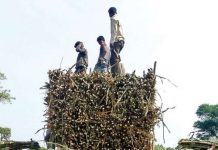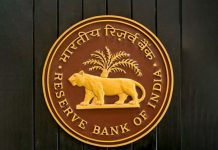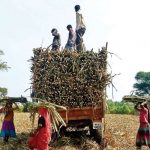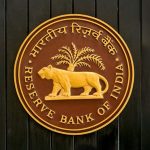August 2 to July 6, 2021
SMALLER CRUSHING IN THE CENTER-SOUTH ON THE AGENDA
There was a price recovery on the sugar futures market in NY over the week, especially for the two first contracts in October/2021 and March/2022, which showed a rise of almost 20 dollars per ton in the weekly accumulated, closing out at 18.79 and 19.32 cents per pound, respectively.
Over the week, the real closed out at R$5.2470 against the dollar, and the sugar price in NY converted by the estimated curve of NDF (Non-Deliverable Forward), a contract in terms of currency with cash settlement, which already predicts the increase in internal interest rate by the Brazilian Central Bank to 5.25% per year, showed an increase of R$116 per ton for the 2021/2022 crop, R$74 per ton for the 2022/2023 crop and R$68 per ton for the next crop.
The funds are still long, according to the data published by the CFTC with almost 227,000 contracts (equivalent to 11.5 million tons of sugar).
The market is already consensually working with a sugarcane crop in the Center-South below 540 million tons, and this has been the main excuse for the increase in sugar at the exchange over the past week. It’s still early to say for sure that we are headed towards a crop of 520 million tons, as some claim.
If we compare the accumulated crushing of 256.7 million tons to that of the last 14 years and taking into account that over the last 5-6 year long cycle the total accumulated crushing up until the first week in July represented 44.3% of crushed sugarcane in the respective crop, we can say that a crop below 529 tons has only a 2.5% probability of happening. But this is only statistics, the skeptical will say.
The macro scenario has gotten better with the lowest U.S unemployment rate since the start of the pandemic. There is a repressed demand which should surprise us when the pandemic is under control and evaluated globally. It will affect mainly fuel consumption (most jobs created in the U.S. has been leisure-related). In Brazil, the total consumption of fuels in June was 10.26% above that of the same month last year. In the yearly accumulated, from January to June, the consumption grew 6.23%. These are encouraging numbers.
Brazilian sugar exports add up to 32.2 million tons (from July/2020 to June/2021). This means that Brazil exported an additional of 10.9 million tons of sugar if we compare it to the same previous period (July/2019 to June/2020), an increase of 50.9%. Ethanol exports reached 2.9 billion liters, the largest volume since December/2013 and an increase of almost 40% against the volume over the same period last year.
A possible recovery of the economy signaling an increase in the consumption of the Otto cycle associated with a reduction in sugarcane production for this year and – certainly –for next year are elements that signal a restricted supply of products which should strengthen prices in dollars per ton for at least the next two crops.
During the week, the Indian government stated that it will make every effort to reduce oil imports. Several Indian ministries work together to reduce the dependency on oil and natural gas. We believe the program that predicts an increase of ethanol mix in gas will speed up.
We know that last year the area under sugarcane in India dropped from 5.5 to 4.84 million of hectares. The per capita consumption of sugar is growing in the country and so is the population, which will soon overtake China (2025/2026). The Indian consumption might come to 31.1 million tons of sugar in the 2025/2026 crop, turning India into a residual exporter of sugar. This is an element that should contribute to the strengthening of the sugar market. As we have said in several previous comments, the sugar market will have some good years of profitable prices.
Realistically speaking, assuming that over the next years India will keep an export subsidy of ₹3,500 per ton and that the minimum price will stay close to ₹ 31,000 per ton, we project a price interval of 16-17 cents per pound for the next 2-3 crops, subject to reviewing depending on Brazil’s behavior with regard to its restricted supply of products (sugar and ethanol) for next years.
We keep recommending holding out for better prices in US cents per pound, but possibly lower in real per ton, which encourages pricing in real per ton with the simultaneous purchase of out-of-the-money calls. However, though the real is one of the currencies that devalued most after the pandemic, it can be hit even harder depending on the authoritarian rips of the president and of the institutional crises he will cause during the election year of 2022. The real is in the same basket as the Peruvian, Argentinian and Turkish currencies.
The Brazilian business community (over 7,000 signatures on Friday) has been showing concern over the current political scene and if it is perceived that the scenario will worsen, the country will surely suffer from the delay of foreign investments, with the risk-Brazil worsening and the distrust of the international community. However, it’s worth looking into the impact a possible exchange rate stress might bring onto pricing and purchasing insurance to protect from tail events.
An exchange rate stress inhibits price readjustments by Petrobras which – if they happen – will abandon international parity. The President of the Republic has asked for a study to avoid gas price increase when prices go up abroad. Let’s not forget that whenever populist governments, be them extreme left or extreme right, ask for “studies” for Petrobras, mill owners always foot the bill. These points are the only hurdles we see that can make the optimism towards the sector fade.
You all have a nice weekend.
Click here to read Episode 1
Click here to read Episode 2
Click here to read Episode 3
Click here to read Episode 4
Click here to read Episode 5
Click here to read Episode 6
Click here to read Episode 7
Click here to read Episode 8
Click here to read Episode 9
Click here to read Episode 10
Mr. Arnaldo Luiz Correa is the Director at Archer Consulting. He is a Risk Manager with an experience of almost 30 years in the agriculture commodities market.
To get in touch with Mr. Arnaldo, write on arnaldo@archerconsulting.com.br












